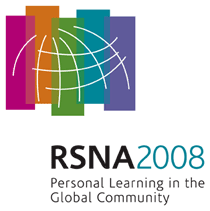
Abstract Archives of the RSNA, 2008
LL-GI4309-R03
Hepatic Enhancement in Multiphasic MDCT: Evaluation of the Different Concentration and Same Iodine Total Dose with Same Iodine Flux Administration in Patients with Chronic Liver Disease
Scientific Posters
Presented on December 4, 2008
Presented as part of LL-GI-R: Gastrointestinal
Nobuyuki Takeyama MD, Presenter: Nothing to Disclose
Yoshimitsu Ohgiya MD, Abstract Co-Author: Nothing to Disclose
Masao Obuchi, Abstract Co-Author: Nothing to Disclose
Hidenori Shinjyo, Abstract Co-Author: Nothing to Disclose
Yuko Kinebuchi, Abstract Co-Author: Nothing to Disclose
Takaki Hayashi MD, Abstract Co-Author: Nothing to Disclose
Tadashi Kitahara, Abstract Co-Author: Nothing to Disclose
Takehiko Gokan MD, Abstract Co-Author: Nothing to Disclose
et al, Abstract Co-Author: Nothing to Disclose
To analyze the hepatic and tumor enhancement and image quality in patients weighing 50-65 kg who underwent contrast-enhanced dynamic imaging on MDCT using 80-ml of 370 mg I/ml contrast material (CM) and 100-ml of 300 mg I/ml of CM with the same iodine flux administration.
One hundred five patients weighing 50-65 kg who were known or suspected with hepatocellular carcinomas (HCCs) in cirrhosis or chronic hepatitis were divided into two protocols. Fifty two patients received 100-ml of 300 mg I/ml at a flow rate of 4.0 ml/sec (1.2 g I/sec) in protocol A, and the other 53 patients received 80-mL of 370 mg I/ml at a flow rate of 3.2 ml/sec (1.184 g I/sec) in protocol B on a 32-MDCT system. After unenhanced scans, multiphasic scanning at 25, 40, 70, 180 sec were started after CM injection through the intravenous access from the right antecubital vein. Saline flush technique was not utilized. The CT attenuation values of hepatic parenchyma, abdominal aorta, and hypervascular HCCs were measured. Mean enhancement value of them was quantitatively analyzed on each phase. Tumor size was also measured. Intrahepatic segmental artery on the first phase and the degree of tumor conspicuity of HCCs on the second, third, and forth phase were assessed qualitatively, using 4-points scale.
Hypervascular HCCs were detected in 23 of the 52 patients in a protocol A (19.6 ± 10.2 mm in diameter), and 19 of 53 patients in a protocol B (19.3 ± 9.9 mm in diameter). Tumor size did not show significant difference (p=0.843). For all patients in both protocols, there were no significant differences in the enhancement of the abdominal aorta and hepatic parenchyma on each four phase quantitatively, and the intrahepatic segmental artery on the first phase qualitatively. For patients with HCCs in both two protocols, there were no significant differences in the enhancement of the abdominal aorta, hepatic parenchyma, HCCs, and tumor to liver contrast quantitatively. Grading of tumor conspicuity also did not show the significant difference on three phases qualitatively.
We conclude dynamic CT using 80-ml of 370 mg I/ml CM can decrease the injection rate, maintaining same qualitative and quantitative performance on each phase.
There may be possibility that reduction of the injection rate might reduce the extravasation, and it was available to reduce the cost of CM (12088 yen in protocol A vs. 11294 yen in protocol B).
Takeyama, N,
Ohgiya, Y,
Obuchi, M,
Shinjyo, H,
Kinebuchi, Y,
Hayashi, T,
Kitahara, T,
Gokan, T,
et al, ,
Hepatic Enhancement in Multiphasic MDCT: Evaluation of the Different Concentration and Same Iodine Total Dose with Same Iodine Flux Administration in Patients with Chronic Liver Disease. Radiological Society of North America 2008 Scientific Assembly and Annual Meeting, February 18 - February 20, 2008 ,Chicago IL.
http://archive.rsna.org/2008/6006906.html

